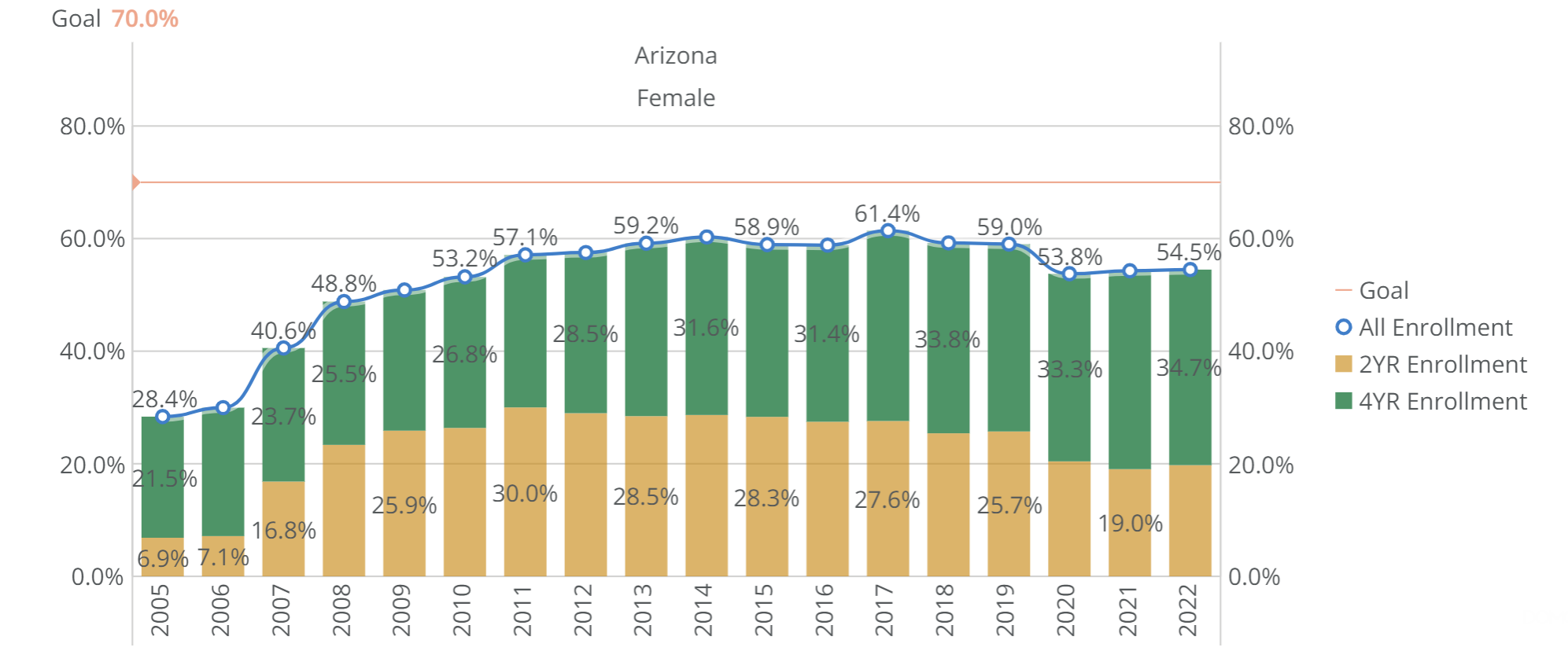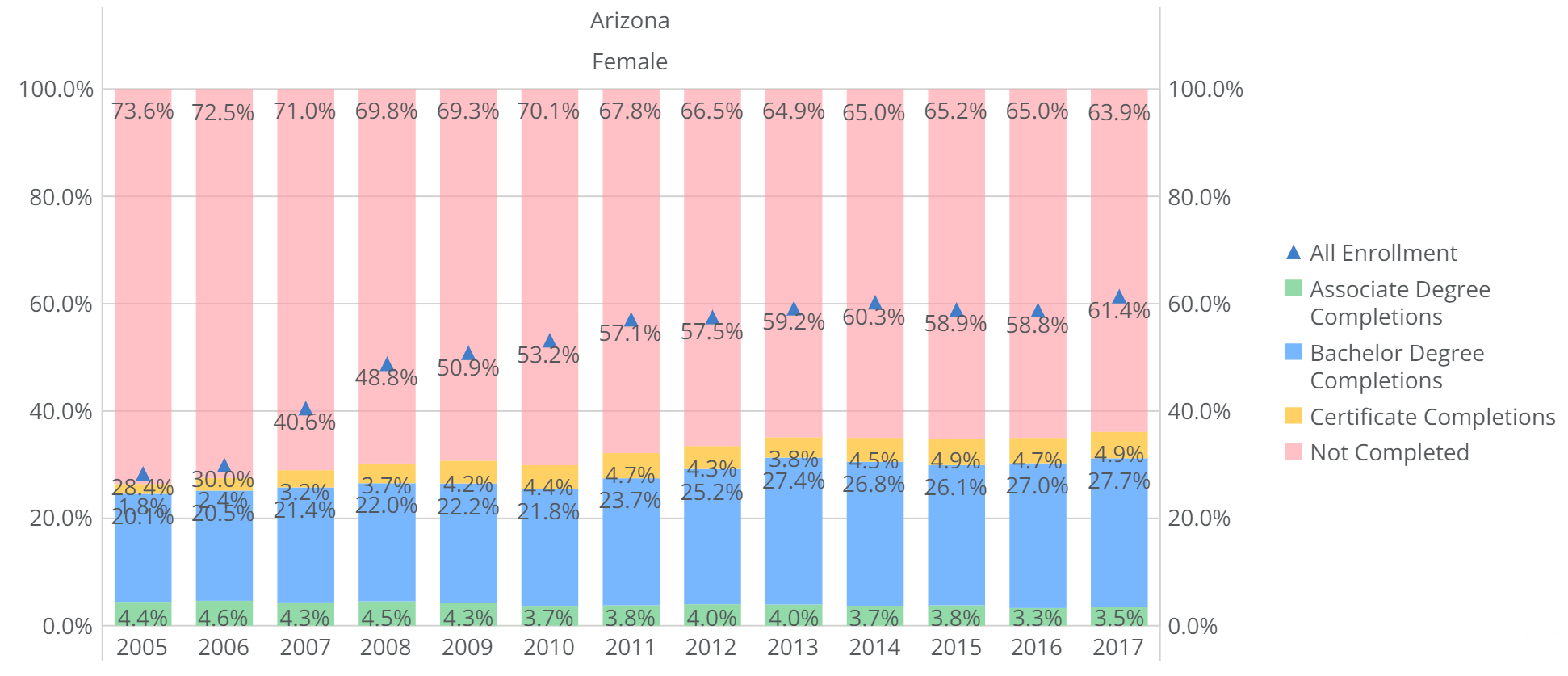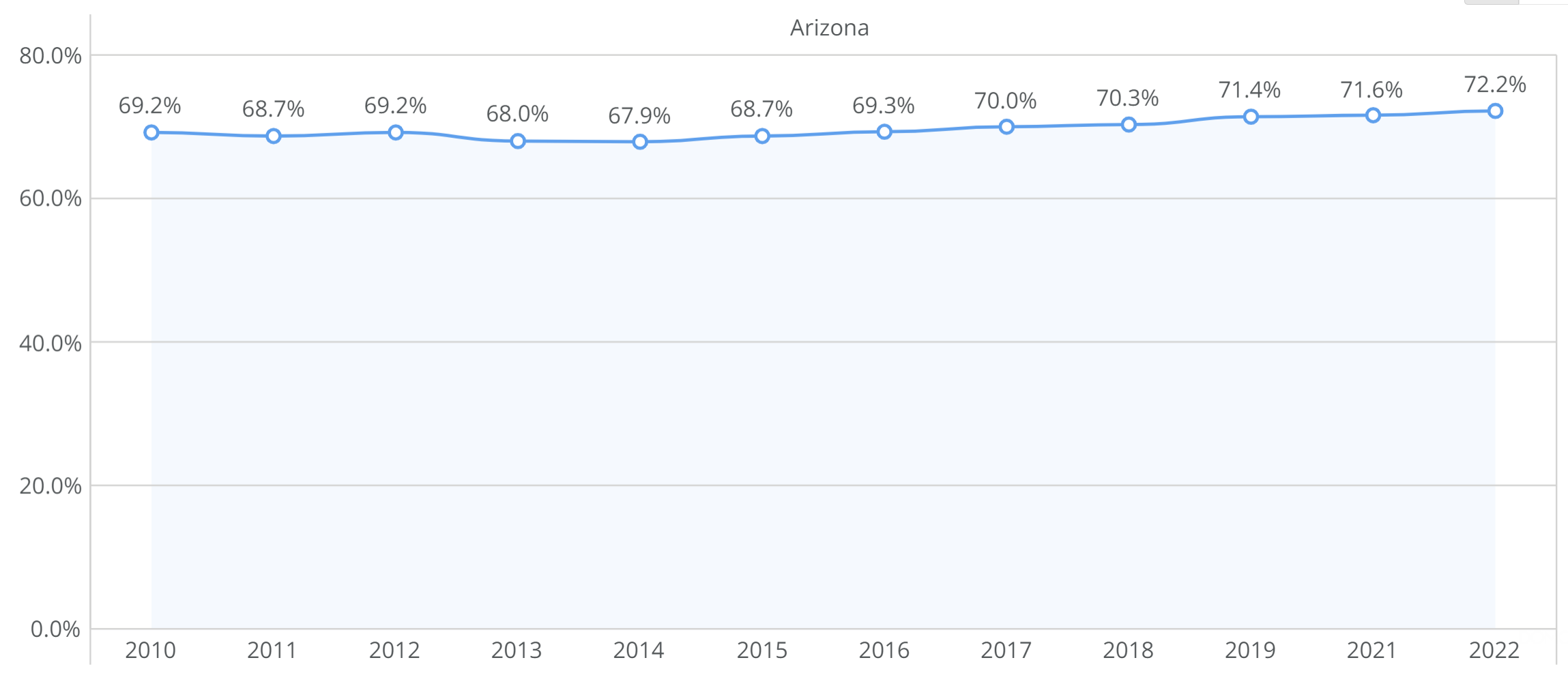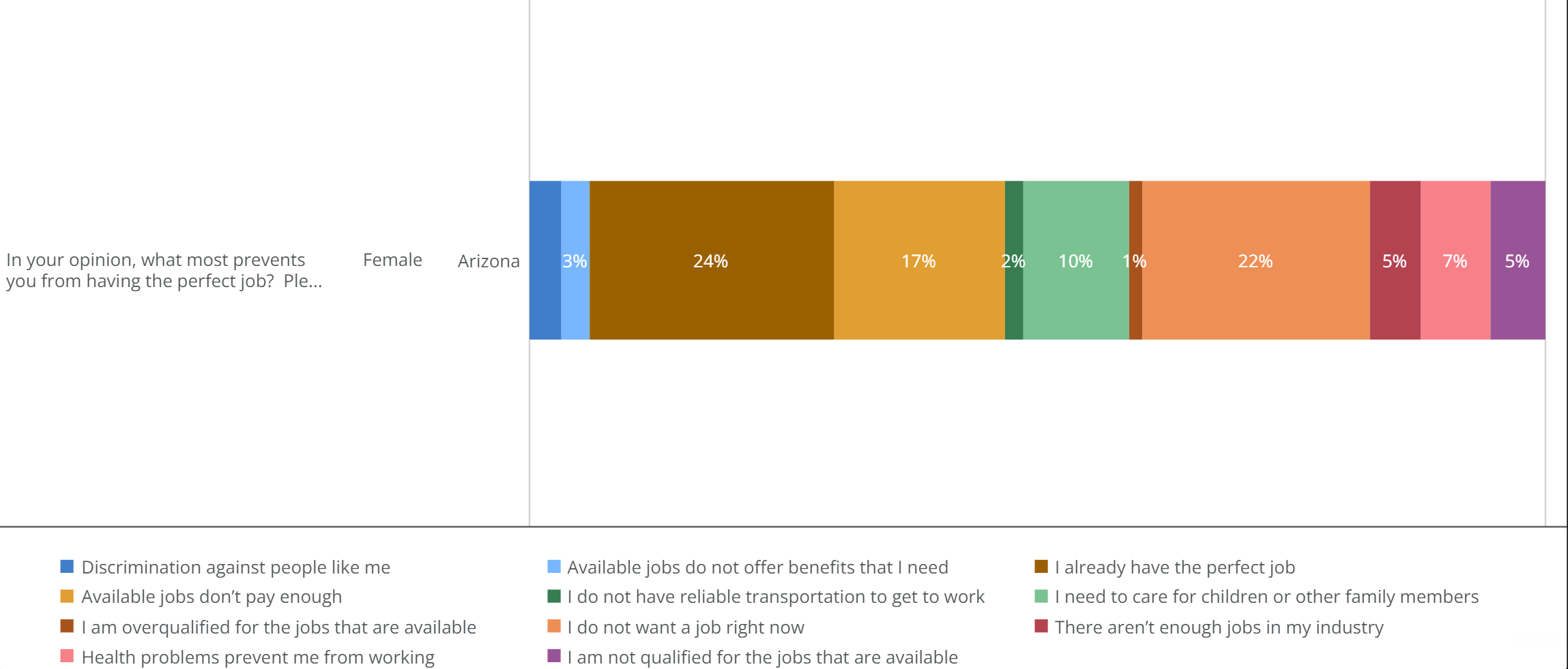Celebrating Women’s History Month
Women make up 50 percent of the population in Arizona, and 79 percent are adults over 18. This Women's History Month, we explore some of CFA’s data on Arizona women to celebrate their integral part of our state's past, present, and future.
CFA’s survey research and Arizona Progress Meter data are rich with insights into the unique views and lived experiences of Arizonans. Sometimes, the data indicate striking differences that can be used to support a call to action in pursuit of equitable outcomes, and at other times, the data seem to indicate parity across subgroups. A close look at how women are doing across Arizona on this Women’s History Month indicates that they have very similar views as other residents of life in our state and perspectives on the priorities of the future, though there are significant disparities across employment and education statistics. Also notable is that views and experiences vary significantly across race and ethnicity subgroups— insights that raise awareness that there is much to do to ensure that all Arizonans realize The Arizona We Want.
Outlook on Arizona
The Gallup Arizona Survey indicates that about half of Arizona’s women believe Arizona has a good reputation and that it’s a good place to raise children. Similarly, 45 percent believe the state is headed in the right direction and are somewhat more confident than other subgroups in Arizona’s strength of leadership, ability to pull together, and care for each other. There are noticeable differences in opinions when considering the race and ethnicity of women in Arizona. Pride in being an Arizonan varies significantly, with the highest among Native American women, with 83 percent being proud to say they live in the state, to about 50 percent for those who identify as African American
On education issues, women in Arizona are strongly supportive of the actions that will move Arizona forward, including 95 percent support for ensuring that every school has enough qualified teachers and principals, 84 percent support for increasing the number of Arizona students enrolling in post-secondary education, and 79 percent support for reducing the financial barriers of going to college.
55 Percent of Young Arizona Women Are Enrolling in Post-Secondary Education the Year After Graduating High School
In recent years, post-secondary enrollment rates for women have continued to climb, though, as with other education indicators, the COVID-19 pandemic has taken a toll. In 2017, for the first time, over 60 percent of high school graduates in Arizona who identify as female enrolled in a college, trade school, or university, up from only 30 percent in 2006.

Figure 1: As recently as 2005, 28 percent of high school graduates in Arizona who identify as female enrolled in college which is up to 54 percent as of the class of 2022. (Source: Arizona Board of Regents, Arizona Department of Education, and National Center for Educational Statistics)

Figure 2: In recent years, women have been enrolling in four-year universities at much higher rates than technical schools or community colleges. (Source: Arizona Board of Regents, Arizona Department of Education, and National Center for Educational Statistics)

Figure 3: Though the enrollment rate of high school graduates in Arizona who identify as female has skyrocketed, the six-year completion rate has grown much more slowly. While 61 percent of these women enrolled in college for the high school graduating class of 2017, 36 percent completed a degree or credential by spring of 2023. (Source: Arizona Board of Regents, Arizona Department of Education, and National Center for Educational Statistics)
In recent years, Arizona high school graduates who identify as female are much more likely to attend college than in 2005, when the most recent dataset was first collected. The one-year enrollment rate in the class of 2005 was 28 percent and has risen to 55 percent by 2022. The peak for enrollment was the class of 2017, when over 61 percent of women graduates enrolled the following academic year (Figure 1).
Figure 2 looks at the enrollment rate for four-year universities vs. two-year colleges and technical/trade schools. In recent years, high school graduates are much more likely to enroll in universities than other institutions.
Figure 3 indicates the one-year college-going rate and completion rate after six years. The most recent data is for the class of 2017, which means the percentage of those who enrolled in college in the 2017-2018 academic year and who completed a certificate, bachelor's, or associate degree by the spring of 2023. Note that 61 percent of female graduates enrolled in college, and 64 percent, regardless of enrollment status, did not complete a degree in six years.
72 Percent of Arizona Women Are Working or Seeking Work
Figure 4 shows the recent labor force participation rate for Arizona’s women. Compared with 2010, in 2022, about 3 percent more of the working-age population (16 years old and older) are working or actively seeking work.

Figure 4: The share of working-age women (16 years old or older) in the workforce is 72 percent.

Figure 5: Factors women cited affecting their ability to acquire the perfect job include: 10 percent the need to care for children or another family member, 22 percent do not want a job right now, and 7 percent health problems prevent them from working, among other responses.
24 Percent of Arizona Women Say They Have the Perfect Job
Our recent Gallup Arizona Survey revealed some insights about what Arizonans think of their current jobs. In response to the question, “What most prevents you from having the perfect job?” (Figure 5), the responses from women included:
- 24 percent say they currently have the perfect job
- 22 percent do not want a job right now
- 17 percent say available jobs do not pay enough
- 10 percent need to care for children or another family member
- 7 percent have health problems that prevent them from working
- 5 percent or fewer say that discrimination, job benefits, transportation, being overqualified, a lack of jobs in their industry, or being underqualified are barriers.
Center for the Future of Arizona is dedicated to advancing The Arizona We Want, a shared vision where all Arizonans enjoy unparalleled quality of life and economic opportunity. Women's History Month reminds us to celebrate the progress made toward gender equity in education and the workforce and acknowledge the work that remains. While women are attending post-secondary education now more than ever, and labor force participation remains high, there is more to do.
To dig into the data on your own, visit the Arizona Progress Meters, which provides data by gender and other subgroups for jobs, education, health and well-being, and young talent metrics. Findings from the recent Gallup Arizona Survey are available in the The Arizona We Want: The Decade Ahead.
